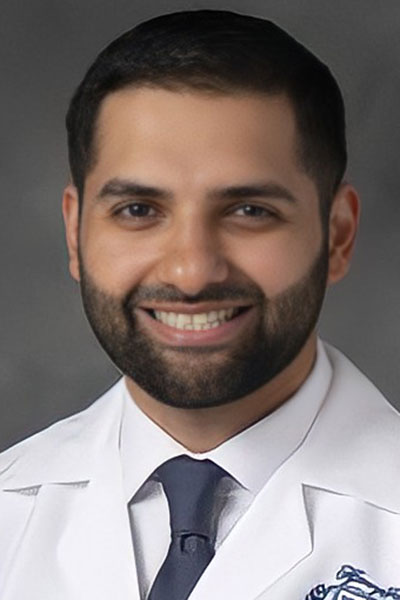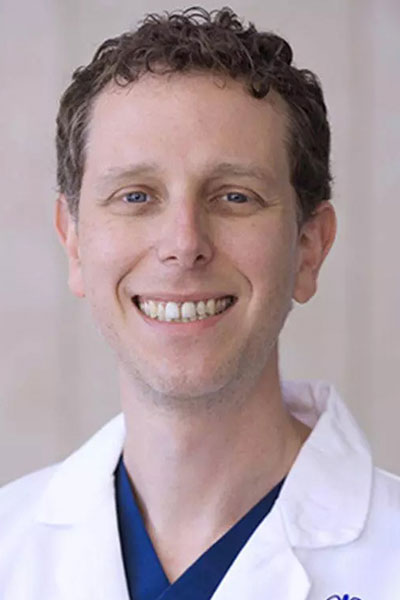Since the beginning of the COVID-19 pandemic, pulmonologists have seen a renewed interest in strategies to treat refractory hypoxemia in patients with acute respiratory distress syndrome (ARDS).
During the CHEST 2022 session Refractory Hypoxemia in ARDS: What’s New? on Sunday, October 16, experts reviewed the use of augmented levels of positive end-expiratory pressure (PEEP), recruitment maneuvers, prone positioning, and ECMO interventions.

Owais Nadeem, MD, senior staff physician at Henry Ford Health in Detroit, opened the session by examining how to choose optimal PEEP in patients with ARDS. The benefits of using optimal PEEP include recruitment of collapsed alveoli and improved arterial oxygenation, he explained, while the potential harms include barotrauma, stress and strain, atelectrauma, and volutrauma. Several factors can help determine PEEP titration, but the optimal approach has not yet been established, Dr. Nadeem said. Those factors include stress index, transpulmonary pressures, serial chest imaging, and pressure volume curves. According to the presenters, the most common and simplest way to address these decisions is by using PEEP tables.
“The use of PEEP tables is a great place to start, but in those sicker patients [with] moderate to severe ARDS, you want to individualize your therapy,” Dr. Nadeem said.

Recruitment maneuver use in patients with ARDS
Should recruitment maneuvers be routinely used in patients with ARDS? Robert C. Hyzy, MD, FCCP, professor of medicine and medical director of the Critical Care Medicine Unit at Michigan Medicine, Ann Arbor, MI, said no, not routinely.
Dr. Hyzy explained that there are many types of recruitment maneuvers, but the two that tend to be studied the most are sustained inflation (a square wave) and the incremental PEEP or staircase method. Most of the time, they’re only embedded in other trials and not studied in isolation, he said.
The two big trials that have studied recruitment maneuvers are the LOVS trial and the ART trial. For the LOVS trial, patients started with a recruitment maneuver, which included a 40-second breath hold at 40 cm H2O airway pressure, on an FiO2 of 1.0 (square wave). The ART Trial looked at the staircase approach, which found more early deaths and barotrauma.
“If you are going to do one [recruitment maneuver in ARDS], your LOVS-style approach would be your go-to thing … but I would caution against the very aggressive stairway approach,” Dr. Hyzy said.

Alaa Abu Sayf, MD, faculty and associate director of the interstitial lung disease program at Henry Ford Health in Detroit, reviewed the physiologic effect of proning, the efficacy of proning, indications/contraindications, assessing response, and duration of therapy of prone positioning in ARDS.
The physiologic effects of proning include reduced ventral-dorsal transpulmonary pressure difference, reduced lung compression and improved gas exchange, and improved lung perfusion. The PROSEVA trial showed that in patients with severe ARDS, proning patients early decreased mortality at 28 days. One indication to not continue proning is if patients don’t show benefit or 28 days pass without improvement, he said.

ECMO in severe ARDS
Darryl Abrams, MD, associate professor of medicine at NewYork-Presbyterian/Columbia University Irving Medical Center, reviewed the different types of ECMO: early, an algorithmic approach; salvage, last-resort ECMO; and rescue, an intervention offered out of sequence when more conventional therapies are unavailable or inappropriate for the situation.
He reviewed the EOLIA trial, in addition to post-hoc, Bayesian, and meta analyses on when to use ECMO.
“Early ECMO — an algorithmic approach to ECMO that gets you there based on certain pre-specified criteria — is better than standard-of-care lung-protective ventilation in very severe ARDS, and certainly early ECMO is better than salvage,” he said. “Waiting until your patient is dying before choosing ECMO is not encouraged.”

COVID ARDS vs ARDS
Ashley M. Scott, MD, pulmonary and critical care medicine fellow, PGY VI, at the University of Arizona in Tucson, provided a fellow’s perspective on how COVID-19 ARDS is different from non-COVID ARDS. She examined the differences in thromboembolic risk, oxygenation, and corticosteroid responsiveness, as well as patient outcomes, among other topics.
“Patients with COVID-19 ARDS comparatively appear to have worse oxygenation, increased incidence of thromboembolism, and a better response to corticosteroids. It appears to be that way, but it’s hard to draw strong conclusions,” she said.
For differences in histopathological changes, compared with other patients with ARDS, those with COVID-19 appeared to have more endothelial injury, microthrombi, neovascularization, and structurally deformed capillaries, based on histopathologic findings from a small German study, she shared.
Join us at CHEST 2025
Save the date for the next Annual Meeting, October 19 to 22, 2025, in Chicago. CHEST 2025 will explore the latest advancements in pulmonary, critical care, and sleep medicine, with a focus on innovation and the future, just as the city itself embodies progress and reinvention.





